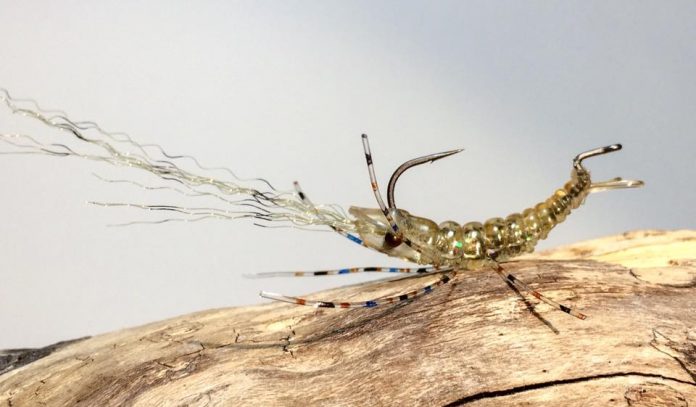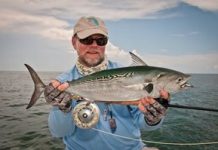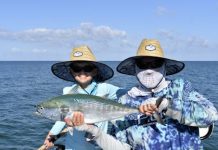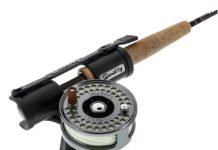By Capt. Pat Damico, CapMel.com Fly Fishing Editor
Recently I wrote an article about how gator trout love the shallows. A warm sunny day will raise the temperature of protected skinny water a few degrees. This creates a favorable environment for large predators as well as their favorite food sources. These factors present a great fishing situation, but what do we do when conditions are less favorable? Back to back cold fronts, frigid north winds, overcast days, limited time, as well as crowded fishing locations may lessen this opportunity. Do we stay at home?

This time of year, most fish feed close to, or on the bottom. This is true whether the water depth is three or ten feet. Low tides have much of the flats exposed. The areas that hold fish under these conditions are nearby and can vary in depth. The last of the outgoing tide and the beginning of the incoming usually present our best opportunity for success. Are there effective ways to present a fly deep, what type of flies will work best, and can I cast something with weight without getting hit on the head, or breaking my rod tip?
Technology in fly line design gives us an edge that wasn’t available a few years ago. Since most of our fishing is not in extreme depths, a sinking tip fly line is my best solution to the problem. Clear sinking tips available from Cortland and Rio have worked extremely well for me. The clear intermediate sinking portion that attaches to the leader varies from nine feet on the Cortland, to twelve feet on the Rio. Recently I had a client from New England who brought his own full sinking fly line to use. If you have never tried to cast one of these, you are in for a workout. Because of the full sinking capability, picking the line off the water is a chore. When I gave him one of my rods with a sink tip, he couldn’t get over the ease with which he could cast better, using much less effort. If you only have a floating line, use a strike indicator and fish it the same way you would a weighted nymph for freshwater trout. Cast up current, and let it drift, drag free, toward you. Constantly watch the indicator, usually a small cork, or brightly colored foam, that can be adjusted, leaving enough leader to keep your crab or shrimp pattern free floating close to the bottom. The slightest hesitation will require a hook set.
Since I mentioned crab or shrimp imitations, you now know my favorite cold weather offerings. Fishing them successfully requires a very slow retrieve. Very slowly move them along the bottom. Patterns with the hook facing up are more snag free. Weight built into the fly, with either dumbbell eyes, cone heads, or weight wrapped around the hook shank before tying, will accomplish everything you need to get the fly deep. Crabs should have the weight in the forward section so they will dive head first for cover, often triggering a strike. Use a relatively short leader with a loop knot to connect the fly to the clear sinking tip. This will make the cast turn over more easily.
Don’t expect nice tight loops when casting heaver flies, or lines with built in weight. A roll cast is often used to get the fly line in the air. Make your backcast more horizontal, and return your forward cast a little closer to vertical. This way the line travels in a different plane. Nicking your rod tip with a weighted fly is one of the biggest reasons for rod breakage. This will no longer be a concern. Pay constant attention to the wind. If a right handed caster, wind blowing at your casting side can spell disaster. With a long rod, try casting very close to the water. If that doesn’t work, pick up line on the right side vertically and then cast forward with your forearm tilted toward your left side. The fly line will return on the opposite side of your body where the wind will keep it away from you. In a strong wind, face behind you and cast as though the fly would be delivered to your rear. Fishing your backcast, while facing behind you, is another technique that will avoid wind problems.
This is one of my favorite times of the year to fly fish. Follow a few of these suggestions and I know you will soon become a proponent of winter fly fishing.
Capt. Pat Damico
Fly Fishing Editor
St. Pete Beach
www.captpat.com
- Captain’s Corner:Pat Damico - June 25, 2019
- Flat water makes seeing tarpon easier - May 17, 2017
- Warm rivers holding plenty of targets for fly fishermen - February 16, 2017











